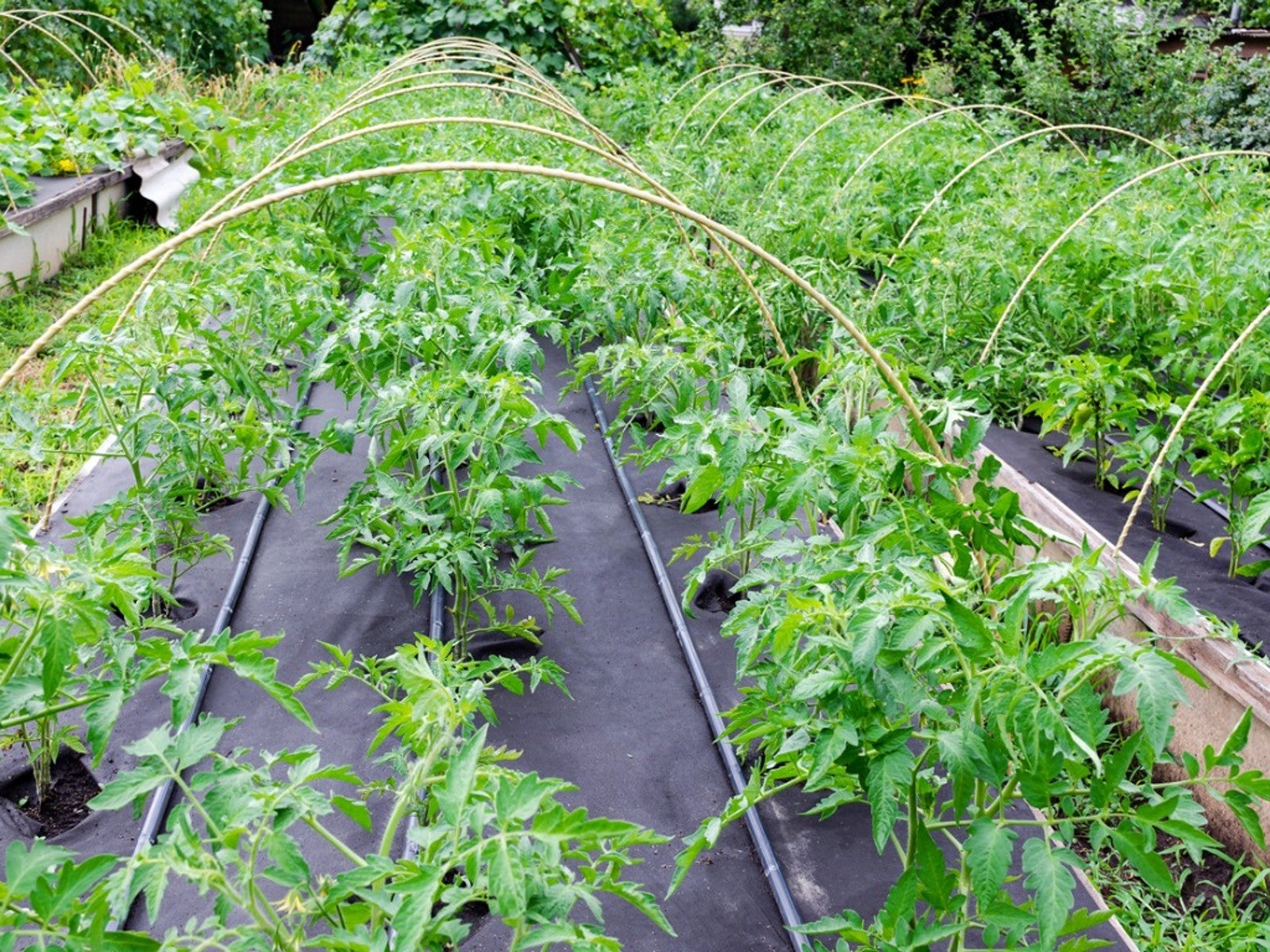Using Landscaping Fabric For Vegetable Gardens

You may have seen or even used landscape fabric. It is frequently used as a layer between the dirt and some type of mulch, often bark mulch or pea gravel. But what about landscape fabric for use in the vegetable garden? It might make sense to use landscape fabric as a vegetable garden weed barrier but, as with everything, there are pros and cons.
Using Landscape Fabric in Vegetable Garden
Weeds left to grow rampant in the veggie garden compete for water and nutrients, host diseases and pests, and make harvesting difficult. It would seem that landscape fabric for the vegetable garden would be a win/win and indeed, laying a barrier of landscape fabric will slow weeds... for a while.
Obviously landscape fabric has the benefit of slowing weeds. It allows water to flow freely to roots and can also be used temporarily in the vegetable garden to warm the soil. Warm season crops benefit greatly by the use of landscape fabric, with one statistic stating that melon crop yields can increase up to 50% using fabric or dark plastic. Landscape fabric is also easy to install with the use of soil staples.
However, compared to organic mulches, landscape fabric is more costly than many other options. Over time, unless it’s removed and stored every season, it tends to break down and shred easily. Also, leaves and other detritus that fall atop the fabric break down into compost that becomes highly attractive to weed seeds.
Is Landscape Fabric Safe for Vegetable Gardens?
There seem to be equal pros and cons around using landscape fabric in the veggie garden, but if you are still unsure, ask yourself if it is safe. By all accounts, landscape fabric does not contaminate the food grown however, remember, landscape fabric is often made of plastic; sometimes recycled plastic, but still plastic.
Because of this material, landscape fabric has some longevity but even plastic breaks down or more likely shreds or tears, often leaving bits of plastic in the soil.
While this isn’t a single use plastic product it is a plastic product that does no favors for the environment. If you are concerned about your impact on the environment you might consider using either organic mulch or another environmentally friendly substitute for landscape fabric.
Gardening tips, videos, info and more delivered right to your inbox!
Sign up for the Gardening Know How newsletter today and receive a free copy of our e-book "How to Grow Delicious Tomatoes".
Substitutes for landscape fabric might be newspaper, cardboard or burlap, which allow water and nutrients to pass through to the soil and slow weeds for a time. Eventually these materials degrade and add nutrients back into the soil.

Amy Grant has been gardening for 30 years and writing for 15. A professional chef and caterer, Amy's area of expertise is culinary gardening.